Having such a long and storied history, tackling a company like Studio D’Artisan posed a bit of an initial challenge. All my interviews thus far have been with the founder of each individual company, but with a company that’s been in business as long as SDA has it was either seek out the original owner, but then miss out on what’s been going on with the company for the past 25 years, or speak with the new owner, perhaps then missing out on some of the earlier history of the company. Thus perplexed I put off the whole enterprise for a bit, wondering how to best convey to the denim fans out there what SDA was all about, then and now.
The answer, in the end, came from my friend Merv at Okayama Denim who suggested I seek out current SDA manager, Yuji Tamanaha. Tamanaha-san talked over the idea with the current owner, Fujikawa-san, and it was decided that Tamanaha-san would be the best bet to be interviewed, now in his 21st year with the company.
Tamanaha-san was knowledgeable and friendly, humble yet obviously passionate about denim. We chatted about everything under the sun, and he would at times pull out different jean samples and historical SDA rarities to show me as we talked – a most enjoyable and educational afternoon for me. Below are the most pertinent bits of our fantastic conversation.
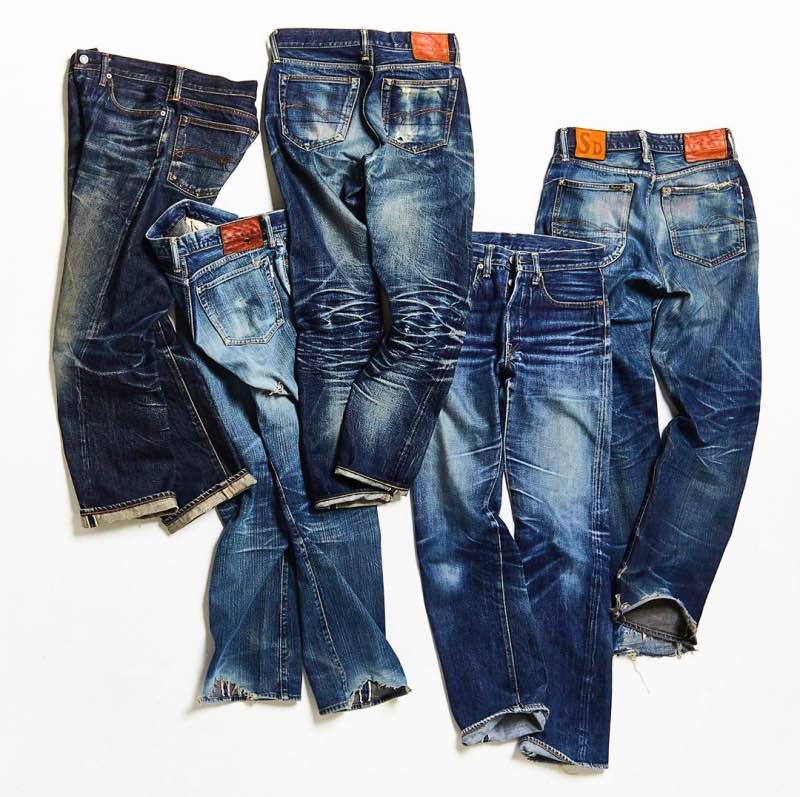
What is your position at Studio D’Artisan?
I’m the sales manager.
How long have you been working for SDA?
It’ll be 21 years this year.
Wow. So it’s been a good while.
It has. Before that I worked for 8 years at a different apparel place too. We were licensed to sell American goods, like Dickies and that kind of stuff. And before that, during my four years at university, I also worked at a jeans shop.
So you were interested in jeans right from the beginning.
Right from the beginning. I’d work in the day selling jeans and then head to school in the evenings.
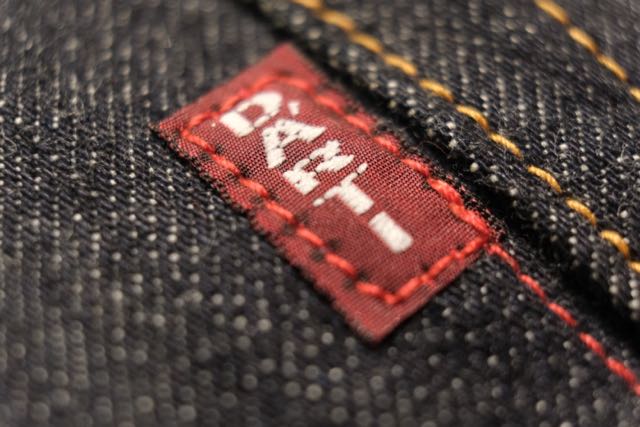
So you really started with SDA in 1999? Funny, that’s the same year I came to Japan.
Oh really? I guess we both showed up in Osaka at the same time.
You’re not from Osaka then?
No. I’m actually from Ishigaki Island, waaaay down south, below Okinawa.
Wow. That’s a beautiful place. And super far! I’d like to ask you what a regular day might look like for you at work, if there is such a thing as a ‘regular’ day.
Well I’m in charge of all sales, both domestic and international, so my job is managing all of that, approaching customers, proposing potential products, getting SDA literature published, etc. All of that kind of stuff.
SDA is now on its third owner, is that right?
Yes, that’s right.
Who was the first?
That was Tagaki-san. But he wasn’t the boss actually…it was his wife, Sayako. She was the owner and they kind of worked as a couple. But he actually left in ’95 so it was before I started. I’ve seen him before of course in the shop, but we never actually worked together.
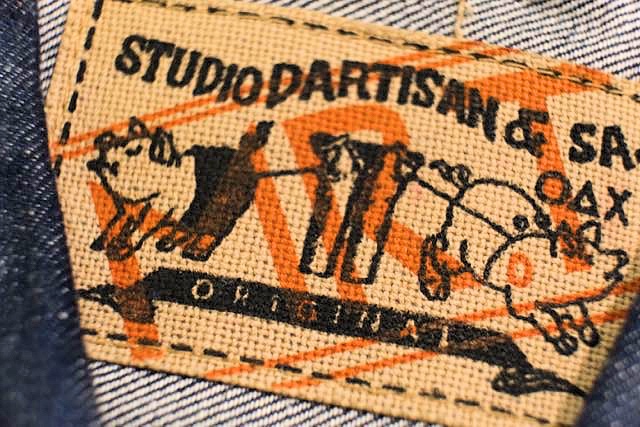
Who was next?
Odawara-san. And now it’s Fujikawa-san. So I’ve worked with both of them.
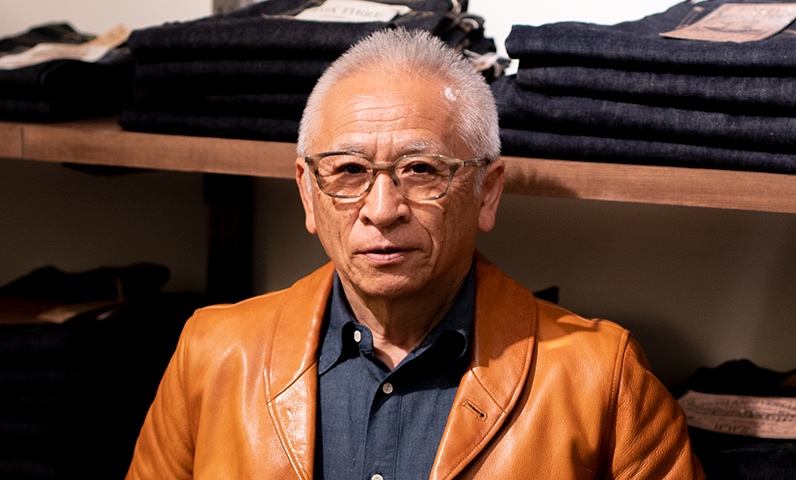
Photo courtesy of SDA
I hope this isn’t an awkward question, but is Fujikawa-san involved in the day-to-day running of the company?
Yes he is, but he lives in Okayama and works from that end. Even back when Odawara-san was the boss, Fujikawa-san did work for SDA through our parent company in Kojima. It’s a company that has a deep history in the denim industry there and they do things like distressing and washing jeans before sale. You know, Kojima was famous for making school uniforms, or ironing pleats into skirts and this what this company did as well. They are still our parent production company.
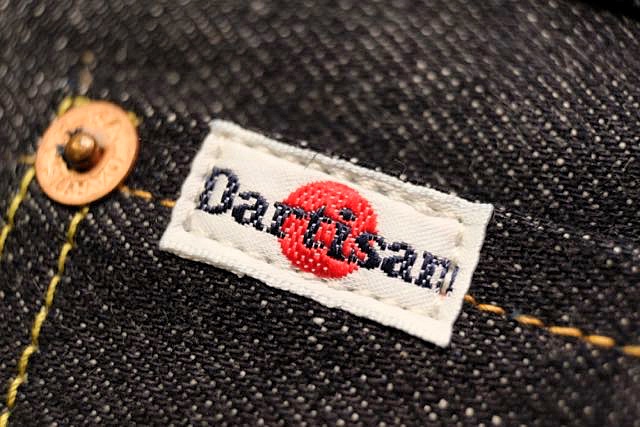
Where do SDA’s new seasonal products, ideas, fabrics and such come from?
We have designers for SDA and designers for Orgueil who will make suggestions to us, but of course we are also directly involved in coming up with ideas and deciding which ones we actually go with.
Are you always taking into account customers’ wishes, wants, requests, etc?
Yes, we are also taking those things into account in our design decisions.
Do you find either domestic or international customers to be more…demanding or wanting certain things from SDA?
Neither really actually…kind of the same. We receive requests from both the Japanese market and the international market.
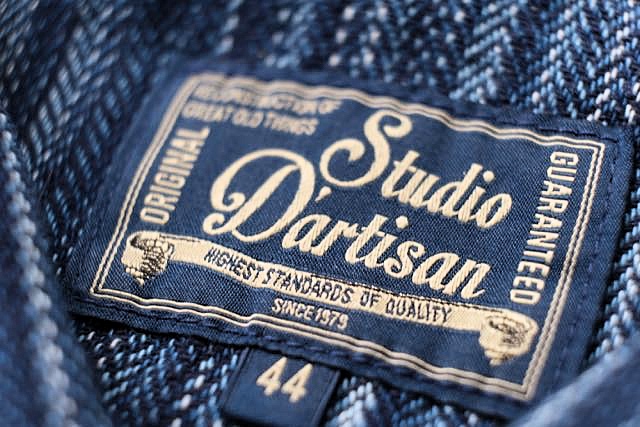
I didn’t want to hit you with such a difficult question right off the bat, but if I’m honest, I know that quite a few people have trouble finding the right sizing with SDA tops. Even in my own experience, while I love the jeans the fabrics you guys use for your tops, it’s really hard to find to find an SDA shirt or jacket that fits my body properly even after trying all your sizes, and I’m a pretty typical Western size and shape. Do you ever hear that from overseas customers and if so, does it concern you?
I think that as we expand our sales overseas we are really going to need to increase the size of some of our items to better match those body types. To be honest, at present, our base designs are still based on what might be called a typical Japanese body type. Up until recently, the “overseas” part of our business has really been mainly based in Asian countries and so the sizing there is of course not that different from Japan so we’ve been able to make it work without too much trouble. But yes, if our business is to really expand in places like the States or Europe then I think there is a pretty urgent need for changing our sizing to better match that market. This is something I really want to consider, and it’s great to have people like you being a voice for the international customers. I really value information and feedback like this…please let me know anything you hear as far as specific complaints or requests go. You don’t need to hold back, I appreciate it for sure!
Well I can certainly do my best to ask around or pass on specific issues I hear about in the international market. I’d be glad to do that. Moving on, are there any other brands that you like or respect what they are doing?
That’s a tough question. Of the companies that started off the denim boom in Japan and are still going now, each of them is doing their best and each of them has certain strong points or outstanding things they make. I can’t really single one out, but they’re all still here because they’ve been trying so hard and doing such a good job in what they do so…the ones that are still going wouldn’t have been able to last this long if they weren’t doing something really well.
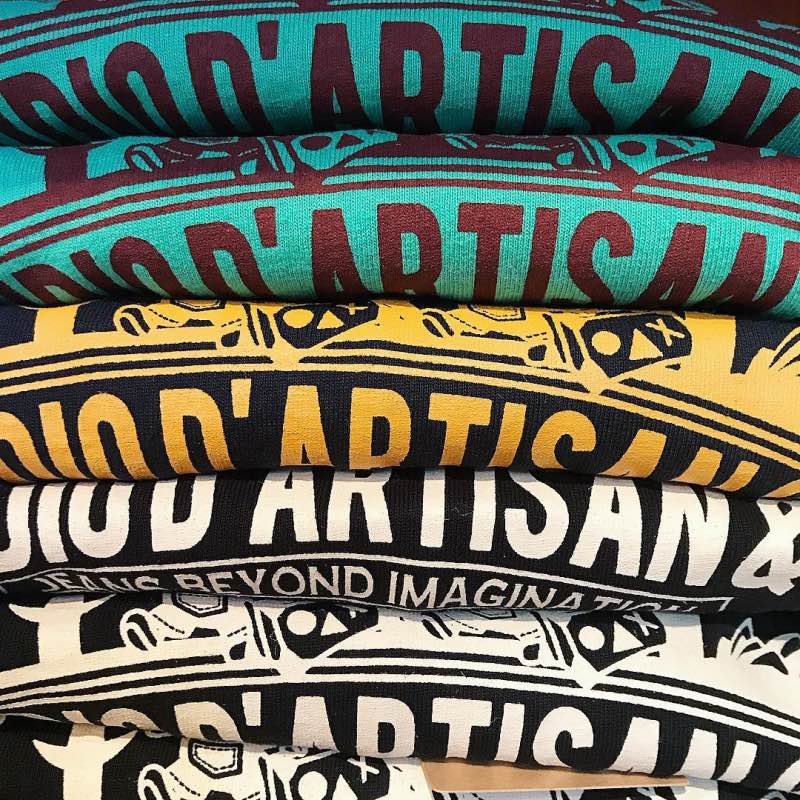
Do you see the other guys as competitors or friends?
Well, we are of course competitors in the same market, rivals mostly from Osaka, but under the surface we are kind of in this together. I’m not sure if any of us could have really survived and flourished without each other really…we all moved forward together in the denim culture that had formed here in Japan. So in one sense we are all rivals, but we often talk privately and exchange ideas and information, like, how might this certain country or portion of the overseas market best be approached, stuff like that. Talking about what worked, what didn’t, whether we want to follow a similar strategy or figure out something else to try. Like that. Rivals in a way but friends too I guess you could say.
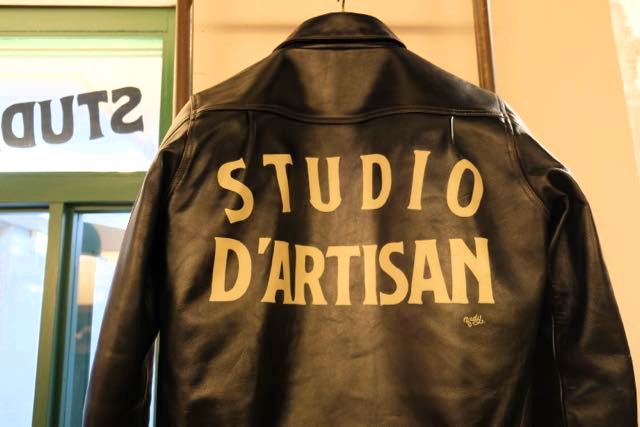
What makes SDA different from the other brands in your observation? What is your strength?
Well even before the whole vintage and replica boom, SDA originally sort of started from ‘nothing’ with Tagaki-san, and by this I mean that at that time there was nobody to follow here. SDA was the first of the Osaka 5 so when Tagaki-san started it was right at the “What does selvedge even mean?” level. I think that the fact we started that way is important for us still as a brand and as jeans makers, starting truly from nothing. In the early 90s bubble economy you could actually still buy jeans here for what we thought was fairly reasonable, like Levis for 5900 yen, 6900 yen. Then you have this brand suddenly trying to sell these made-in-Japan jeans for 20,000 yen. I don’t think they were very well-received at the start to be honest, but slowly as SDA kept at it people began to take notice. Of course they were jeans – something very American – but it was being done here in Japan. As you know, Tagaki-san was involved in designing in Europe, so he came back here and wanted to combine the goodness of European design and quality with the high level of craftsmanship and attention to detail that he knew Japanese artisans were capable of. So that’s the name as well, right? It literally means a studio where skilled artisans are making something special. I also think SDA does a lot of original stuff as well…taking a risk sometimes on coming up with something adventurous or a bit ‘out there’. So there’s a playful edge there too that really leads to freedom and creativity with the designers and the brand. I think that’s quite unique.
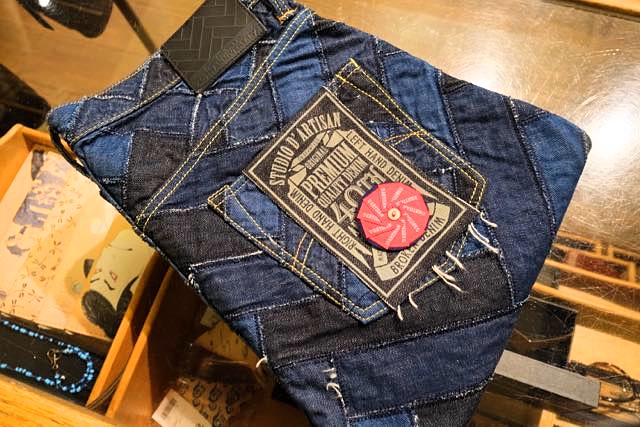
Do you have a favorite model or item that you guys have done?
I like the 100 series denim that we’ve been making all along. I also love the natural “aizome” stuff we’ve been doing, the way they fade and change. That’s what I love.
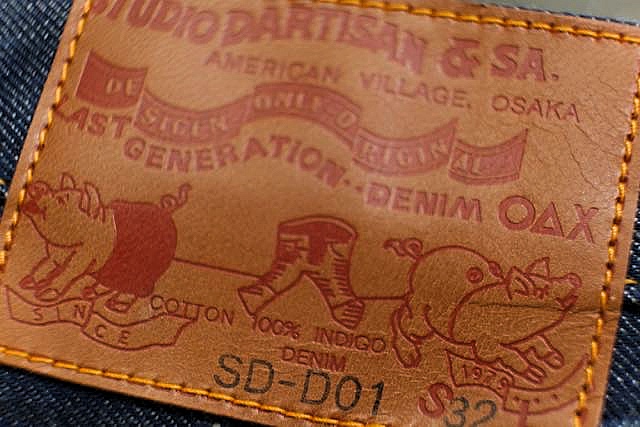
Talking about fabric, all yours comes from Ibara? Okayama?
Yes, that’s right.
Are you using several different mills?
Yes…we are sometimes changing our models or ways of making denim, thread sizes, etc., so it’s dependent on all that stuff.
Do you have to be in contact often with them, or travel to Kojima?
Well, the boss is always there in Kojima overseeing production so he is able to do that from there.
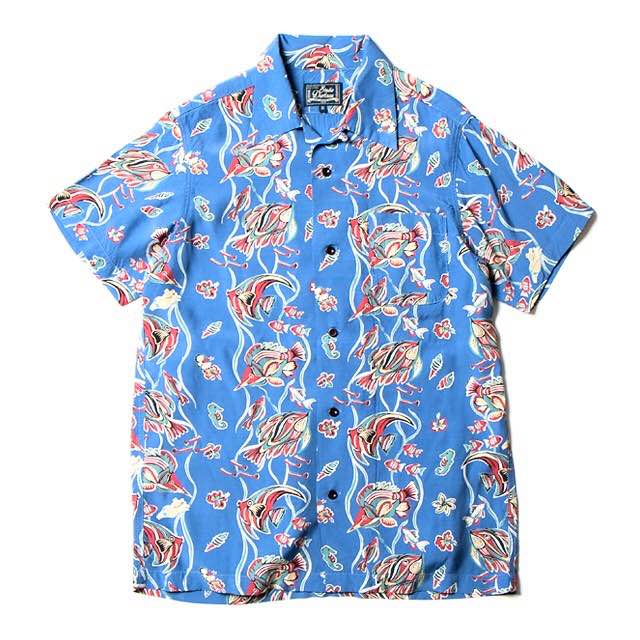
Do you think there could be a denim shortage in Japan in the future? You often hear this kind of thing being talked about…
Yeah, if you go to the production sites you can see that everyone is…well, of advanced age so I think the most important thing we can do is getting younger people in there and training them. And this is happening. So I would say that it is a real worry in a way, but at the same time, I think they are taking measures to ensure that things can continue into the future. I think they’re going to make it.
How about sewing?
Yes, this too. It’s being done by older people, but here again there are trainees coming in from overseas, so that is a positive sign. Jeans makers have their sewing places kind of decided, but eventually there is going to be some overlap, which can’t really be helped. At the very least though, I think that the sewing will continue and jeans will continue to be made.
All your sewing is done in Okayama?
Yes, in Okayama.
Do you get a lot of overseas customers coming into the SDA Osaka shop?
Yeah…it’s not like a crazy amount or anything, but we do get them coming in for sure.
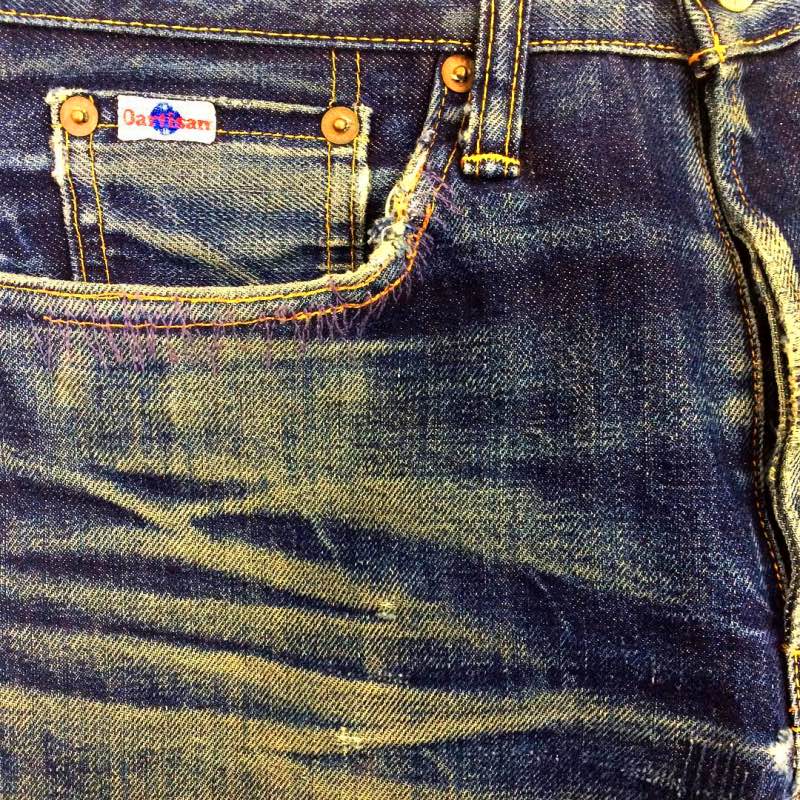
You guys don’t have overseas shops do you?
No, we don’t, not for direct sales. Osaka, Harajuku (Tokyo), Ebisu (Tokyo), Yokohama’s Motomachi…just these four. These are our actual Studio D’Artisan shops, but we do sell our stuff in about 130 or 140 other shops within Japan and in about 40 shops overseas.
What’s the best thing about your job, for you?
Well for me, like I was saying earlier, I’ve been into denim forever. You know, I was born on a tiny little island in the very southernmost part of Japan and we didn’t have any way of getting any information about anything. From when I was born to when I left for university we had one channel, NHK (Japan’s public broadcasting service). We’ve got more than one now there though! (laughs).
That’s good!
So I loved jeans but…I couldn’t find out much of anything about them. I then moved to the main island of Okinawa where there has always been a big American military base and suddenly there was all this stuff I liked, you know, searching around for jeans and stuff. What I’m trying to say is that the best part of my job is that I’m still doing, after all these years, the thing that I’ve always loved. I’m living the dream so to speak…that’s awesome for me.
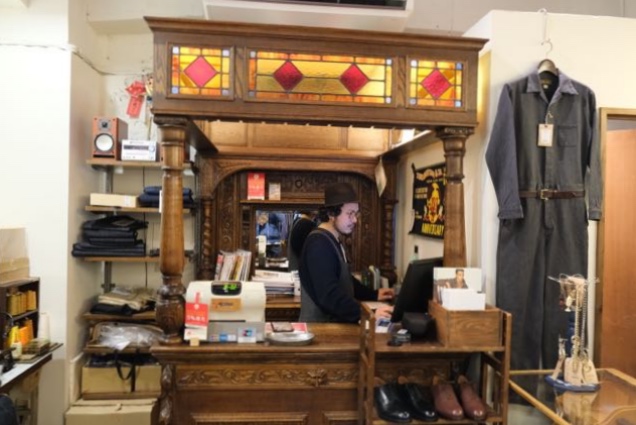
What would the worst part be…the hardest part of your job?
Well I’m really doing what I love so there isn’t really anything that bad I need to deal with but…I guess though it would have to be sales. Like if you can’t sell what you’ve made. And also, sometimes what you want to make and what you know will sell well aren’t the same thing, you know? (laughs). Or sometimes a shop will have a surplus of our stuff that didn’t sell so well, so we have to sit down and think, talk about how best to sell it or create things that do sell a bit better. All of this can be a bit tough, but so far we’ve always been able to keep things rolling. And funnily enough, even those kind of tough situations can end up being fun in weird way (laughs).
How do you see the Japanese denim market right now? Going up? Down? Trundling along in a straight line?
Within Japan itself it’s really not that good, to be honest. If you include the overseas market though, it’s still not too bad. Last year was our 40th anniversary and it was good. All we can do is keep trying to make the best stuff we can.
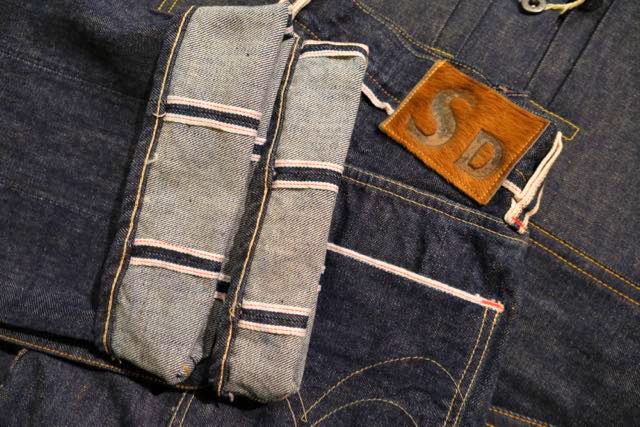
A lot of denimheads overseas talk about the “Osaka 5”…do you guys actually use that term much in Japan? How do you feel about it?
Yeah, we don’t really say that much actually.
You guys were the first weren’t you?
Yes, I guess we were. Studio D’Artisan. Denime. Evisu. Full Count. Warehouse.
Because if you say “Osaka 5” in some circles, it sounds…god-like…(laughs)
It’s actually a bit complicated. You have these companies all interconnected in some way, but then some have been around longer than others, those other guys you’ve talked to are the actually owners, I’m not. And then there’s the whole sempai and kohai thing (*a system in Japan where juniors, or kohai, must defer and show respect to those older than themselves, the sempai).
What do you enjoy doing in your free time? Hobbies or interests?
I love making things. Like tote bags, for example. I also love making stuff for the house, like furniture. I also have a sewing machine at home so…I love to make things. I like to make things I need…the feeling of using or wearing something you made yourself. Other than that, I’ve always loved American collectibles like mascots, characters, old tin cans and vintage advertising or packages. I love to walk around and search out this kind of stuff. There used to be tons of those kinds of shops in Osaka and I’d spend hours checking them out. Not so many any more though.
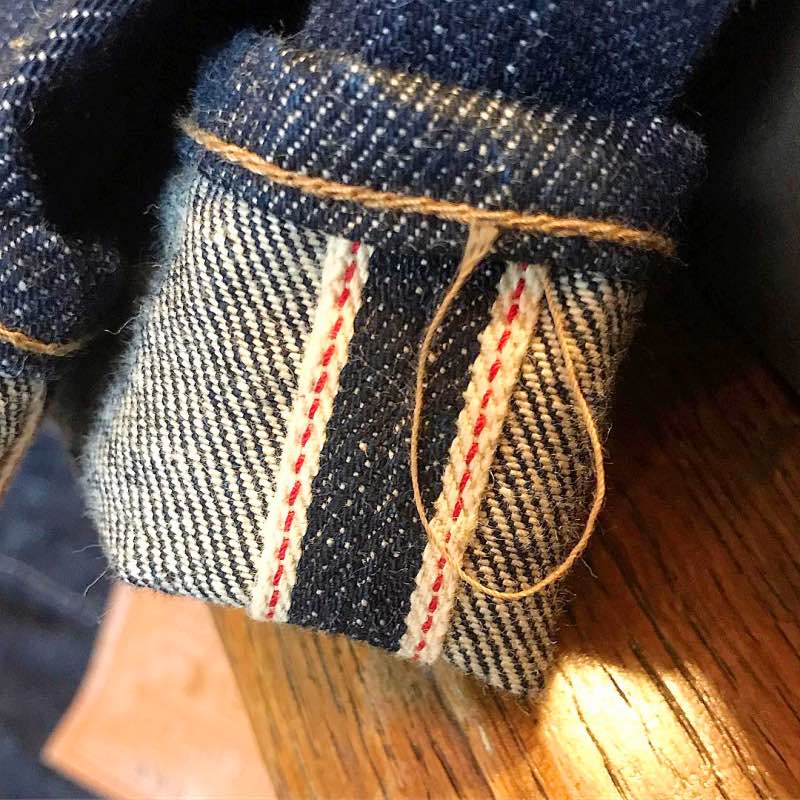
What do you think about some companies offering warranties or free repairs on their jeans?
On the surface of it, there’s no question the customers would be happy if you were able to offer this, but the first issue is how far do you take it? At what point does natural wear become damage? And then do you fix it once, twice, forever? I think also that the way people wear their stuff is unique to each person so things fade and wear out in different ways and at different rates depending on the person. We do use some polycore thread, but basically everything is cotton. Cotton breaks down and, over time, fades and wears out. It’s supposed to do that and it’s one of the things that makes denim fun. I do understand that some people really love to wear their stuff forever and repair it many, many times…I suppose it would be nice if that could be covered by warranty forever, but again, it would be hard to put a limit on it or know when to stop if a company were just doing a blanket policy of “free lifetime repairs”. It’s also worth noting that the skill of repairing jeans isn’t really the same skill it takes to make jeans. It’s different in most cases so you also need people specially skilled in repair. In our case, of course stuff like hemming is free, but we do charge for damage repair, the amount charged depending on each individual case.
Where does your cotton actually come from?
Several different places. America, India… Really depends on the fabric we’re after. In some cases we use really long staple cotton to get that sheen and relatively smooth-surfaced denim. In other cases though we might use a mix of cotton from different places to achieve a certain texture. We also have things like our Suvin Gold which is also long staple. So in some cases it’s 100% from one particular area, and in other cases it’s a mix of cotton from different places.
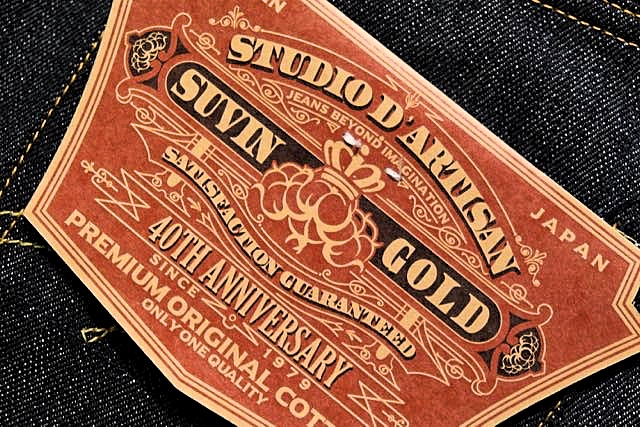
Are you involved in that part of the business?
Yes, I am involved in the planning.
What do you think about about stretch denim?
Actually we are just starting to make it.
How do you feel about it?
(laughs) To be honest, we’ve never really had a call for it until now. Nobody really ever asked us for it so we didn’t make it. Even when we had samples made up for exhibitions, nobody was really into it. But lately with the tighter silhouettes people are liking, especially overseas, it’s starting to make sense and some people are wanting it. Of course they also want to make sure the selvedge line is visible. In Japan it might not work so well because the kind of customers who like the vintage stuff like what we or Full Count or Warehouse are making, or say, the people who are into Samurai, are kind of set in their ways. Like, their denim has to be a certain way. And stretch denim, in their minds, is not part of that way. But it seems that overseas customers are a bit more open in that regard. I mean, overseas, if it’s Japanese denim and the fit and silhouette is good, stretch denim isn’t seen as such a bad thing. So yes, it seems like it’s starting to gain traction in some markets, but how much we’ll actually sell I’m not really sure.
Do you guys do a lot of collaboration?
We sometimes do it, yes. It usually starts when a customer (usually a shop) will come to us with an idea of what they want…maybe it’s a certain type of fabric or something or some item that we don’t have in our normal line so we’ll discuss back-and-forth and see what we can come up with for them.
Is it always the customer (other shops) coming to you with the request to collaborate?
It sometimes happens the other way too – us going to them with a certain fabric or cut in mind and seeing if it’s something they’d want to do.
Do you sometimes have to go overseas?
Yes, sometimes I have to go.
Can you speak English at all?
Haha…not even a scrap! Like not even a little bit. (laughs) And somehow I’ve been going overseas for decades and selling things like this! (laughs even harder)
Oh, one thing I wanted to ask you about. I saw those crazy seasonal dyed jeans in the shop earlier today…the charcoal, chestnut, cherry blossom, leaves…what are those all about? Who thought of that?
Ah yeah, those are cool. Last year we all got together with our planning department and threw ideas around about how we could express the four Japanese seasons through the medium of denim. So that’s how that all came about…like cherry blossoms for spring, etc. We really wanted to express this to our overseas market, using denim and Japanese craftsmanship. Our goal with this one wasn’t really just to ‘sell denim’, but instead to really craft a part of Japanese culture and then use that product to transfer that experience to the customer. We sold them wrapped in a traditional furoshiki or Japanese cloth.
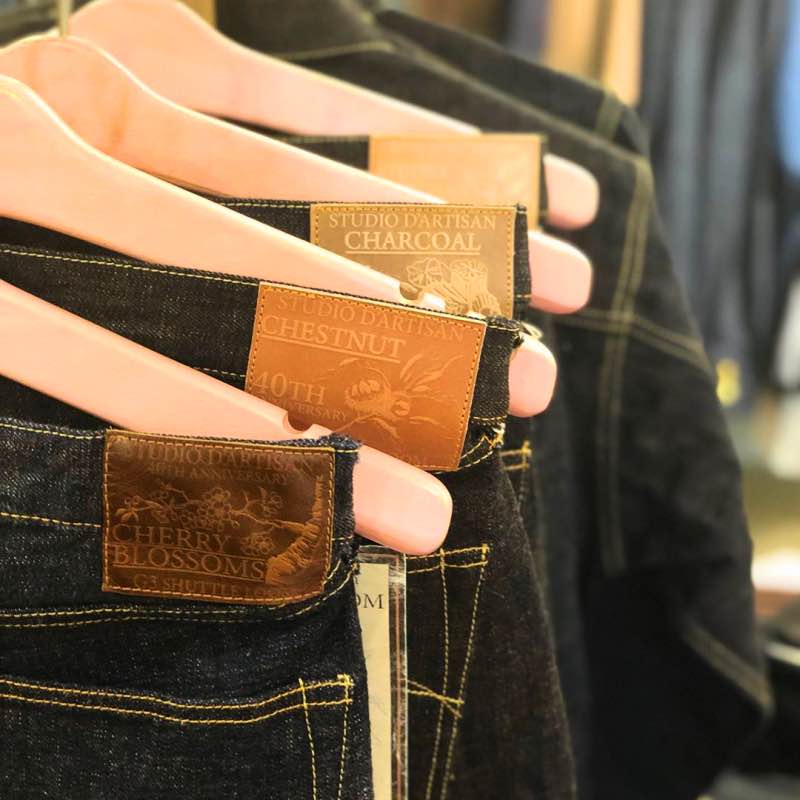
Are you going to that every year?
We haven’t really decided that yet. The idea behind it all I think was the same with Merv’s (Okayama Denim) ‘matcha’ jeans like you’re wearing today. He wanted to express some element of Japanese history and culture through those jeans.
I love these things. Slubbiest jeans I own actually.
Yeah, that fabric was really right at the edge…right at the limit of what our machines are capable of. Would be hard to go slubbier than that.
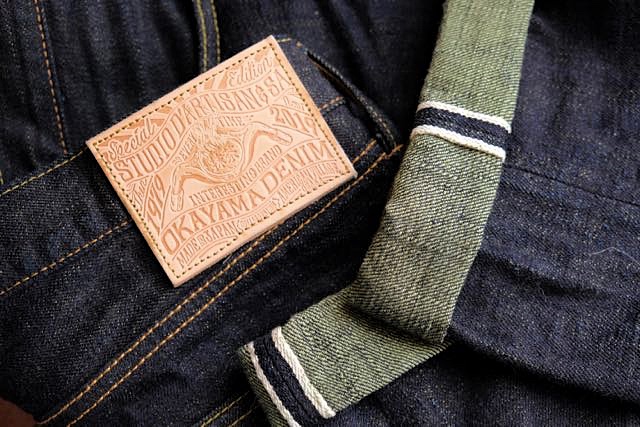
Is there anything else you’d like to add or say to the SDA or denim fans out there?
Hmmm…well I’d really like for people to not only be into the jeans or denim itself, but also the culture…the culture of Japanese denim and even of Japan itself. If what we make were to cause someone to be so interested in denim culture or in Japan that they actually decided to come to Japan and experience the culture firsthand, that would just be awesome I think. You know, our Japanese market is of course valuable too, but if it weren’t for all the SDA fans overseas who have supported us I don’t think we would be still be going this strong after 40 years. I just have a huge appreciation for all the people who have gotten into our stuff and allowed us to keep doing what we are doing. It’s also because of our customers’ wants and needs that we are able to move forward…we wouldn’t get far just sitting here and solely making whatever we ourselves wanted to make. (laughs) It’s great too when overseas fans come here to Japan and to visit us at the shop and tell us how they like our stuff. It’s awesome to meet them.
Well Tamanaha-san, thanks for today. It’s been great to get to know more about a brand I wasn’t all that familiar with…even though I wear SDA stuff! (laughs). It’s been really interesting.
Well thanks to you too for doing all of this. Hopefully we can talk again and just let me know if there’s any other information you need or questions you might have. We can head over to the shop now if you want to take some pictures.
Sounds awesome.
Find Studio D’Artisan’s homepage here.

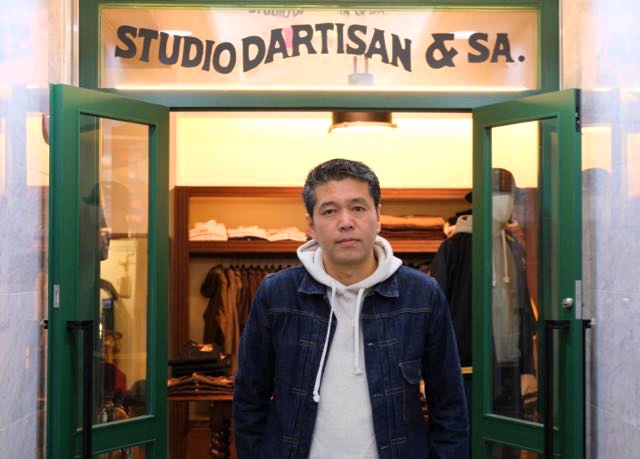
It’d be interesting if you could also interview the previous owners. Also, why did SDA have so many different owners? Struggling business or just getting old or what?
Great ❤️🇯🇵